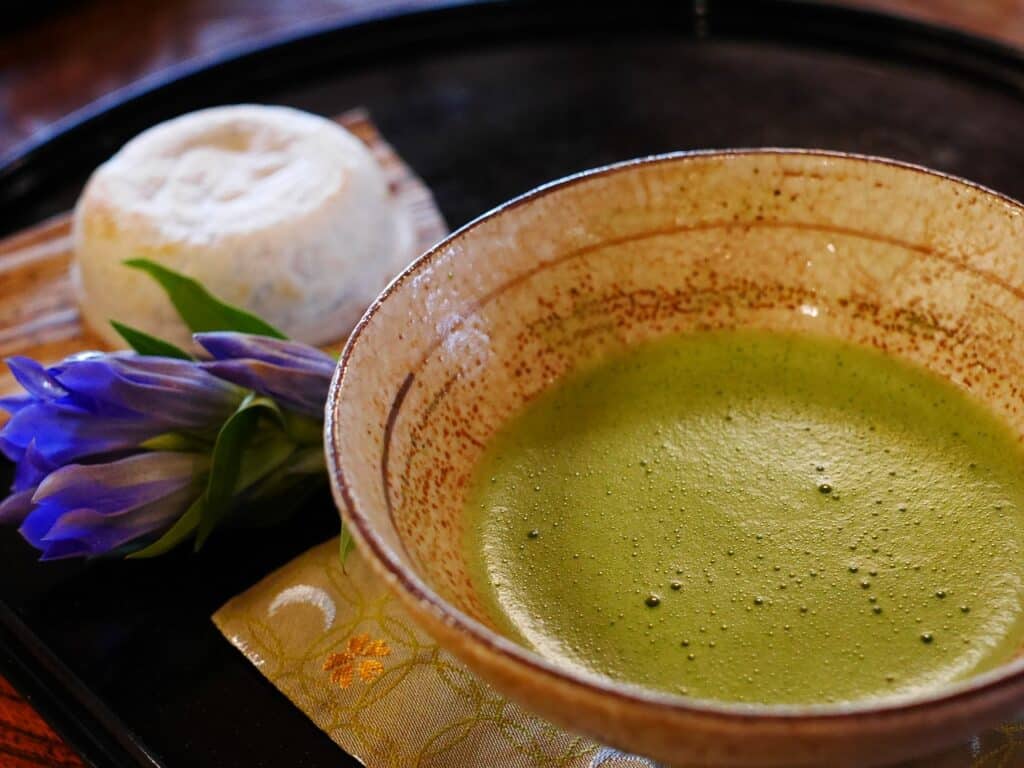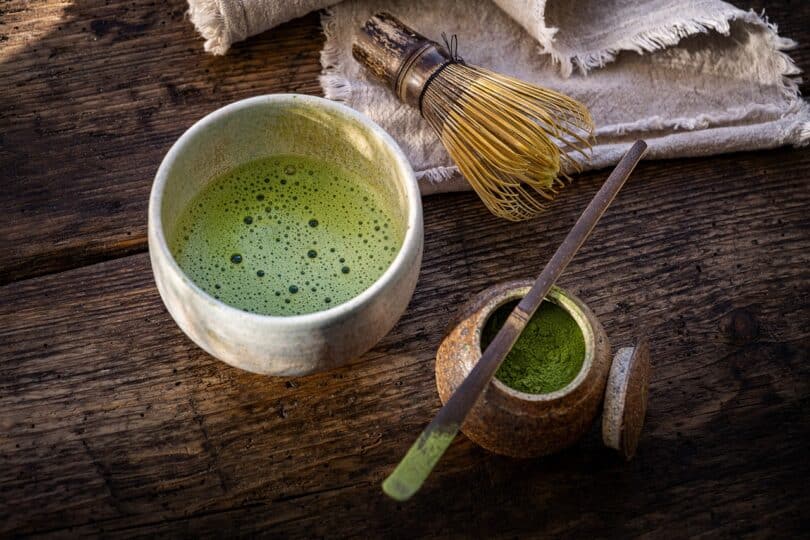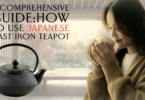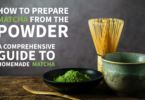Japanese matcha, a finely ground green tea powder, captivates tea enthusiasts worldwide with its vibrant green color, unique flavor, and numerous health benefits. To find the perfect matcha, understanding its region of origin and grade is essential. In this guide, we explore the factors that contribute to good-quality matcha, taste and flavor profiles based on different regions, and the best ways to enjoy this ancient beverage. Whether you’re a seasoned matcha lover or a newcomer eager to experience the wonders of this tea, let’s uncover the world of Japanese matcha.
Table of contents
Choosing High-Quality Matcha
As a Japanese citizen, I have experienced a lot of real matcha tea in temples and tea ceremony situations. Frankly speaking, it is not something we drink every day in Japan. However, when I go abroad and taste matcha drinks and sweets, I am shocked to find that they do not have the original flavor of matcha.
So, here I will talk about the origin and grade, which are important for selecting good quality.
1. Region of Origin:
Uji, Kyoto Prefecture:
Uji, Japan’s matcha birthplace, boasts lush green hills and a temperate climate, creating an ideal environment for tea leaves. Uji matcha offers a rich umami flavor, a harmonious blend of sweetness and slight bitterness, and an enticing vegetal aroma.
Ippodo Tea (Kyoto Since 1717) Sayaka – Rich Matcha (40g Can)

▲Click to go to the Amazon product page
▲Click to go to the Amazon product page
Nishio, Aichi Prefecture:
Nishio is a major matcha producing region known for modern cultivation methods and high-volume production. Nishio matcha, with its vibrant green color and slight bitterness, is often used in culinary applications.
▲Click to go to the Amazon product page
Yame, Fukuoka Prefecture:
Yame matcha, gaining popularity, features a bright green color and a rich, smooth flavor, making it a favorite for traditional tea ceremonies.

▲Click to go to the Amazon product page
Shizuoka Prefecture:
Shizuoka is renowned for various teas, including high-quality matcha. Shizuoka matcha offers a fresh, grassy aroma and a well-balanced taste.
My birthplace is Shizuoka, so I drink Shizuoka green tea sent by my family every day.

▲Click to go to the Amazon product page
Sayama, Saitama Prefecture:
Sayama matcha is unique for its “tana” cultivation method, resulting in a refreshing taste and grassy aroma. It has a clean, mellow flavor, perfect for drinking straight or incorporating into desserts.
2. Grades:
Ceremonial Grade Matcha:
In traditional Japanese tea ceremonies, ceremonial grade matcha takes the highest quality position. It delivers a smooth, creamy, and sweet flavor with minimal bitterness, along with a vibrant green color and a delicate, silky texture.

▲Click to go to the Amazon product page
Premium Grade Matcha:
Premium grade matcha is ideal for daily consumption, slightly coarser than ceremonial grade but still offering a pleasant balance of umami and sweetness.
Kiyo Matcha Premium Grade Ceremonial Uji Matcha – Pure Japanese First Harvest Ceremonial Grade Matcha Green Tea Powder from Uji, Japan (40g/1.4oz)
▲Click to go to the Amazon product page
In addition to this, each manufacturer has its own unique characteristics, such as blending and even the way the matcha is ground, making it a very deep world.
Benefits of Matcha
1. Rich in Antioxidants:
Matcha contains powerful antioxidants called catechins, especially epigallocatechin gallate (EGCG), which combat oxidative stress and promote overall well-being.
2. Boosts Metabolism and Energy:
Matcha’s combination of caffeine and L-theanine creates a focused, sustained energy boost without coffee’s jitters.
3. Enhances Relaxation:
The L-theanine in matcha promotes a sense of calm and relaxation, making it perfect for meditation or relaxation routines.
▶Would you like to enjoy Japanese incense together?
4. Aids in Detoxification:
Chlorophyll in matcha supports the body’s natural detoxification process, helping eliminate harmful substances and toxins.

Note: Matcha During Pregnancy
- Matcha is generally safe for consumption, but caution is advised during pregnancy.
- Matcha contains caffeine that can affect the developing fetus through the placenta.
- High caffeine intake during pregnancy may increase the risk of miscarriage and low birth weight.
- If pregnant or planning to be, limit matcha consumption and consult your healthcare provider.
- Seek personalized guidance based on your health condition and potential risks.
- Consider decaffeinated matcha or lower-caffeine teas for a safer option.
- Prioritize your and your baby’s well-being during this special phase of life.
Real-World Examples of Drinking Matcha
1. Traditional Matcha Tea Ceremony:
Prepare matcha with a bamboo whisk (chasen) by whisking it with hot water until frothy, then serve in a bowl (chawan) and sip serenely for a traditional tea ceremony experience.

▲Click to go to the Amazon product page
For more information on how to make matcha, please check this article.
How to Prepare Matcha from the Powder: A Comprehensive Guide to Homemade Green Tea
2. Matcha Latte:
For a modern twist, enjoy matcha as a latte. Mix matcha with hot water, froth milk (dairy or plant-based), and pour it over the matcha mixture. Sweeten with honey or agave syrup for a delicious and comforting matcha latte.
Conclusion
Japanese matcha is an ancient treasure offering a unique and unforgettable experience. To find high-quality matcha, consider its region of origin and grade to suit your preferences. Explore the taste profiles and preparation methods to unlock the true magic of matcha. Embrace its numerous health benefits, savor the exquisite flavors, and let Japanese matcha enrich your tea journey.










[…] How to Choose High-Quality Japanese Matcha: Taste, Flavor, and Origins Explored […]
[…] How to Choose High-Quality Japanese Matcha: Taste, Flavor, and Origins Explored […]
[…] How to Choose High-Quality Japanese Matcha: Taste, Flavor, and Origins Explored […]